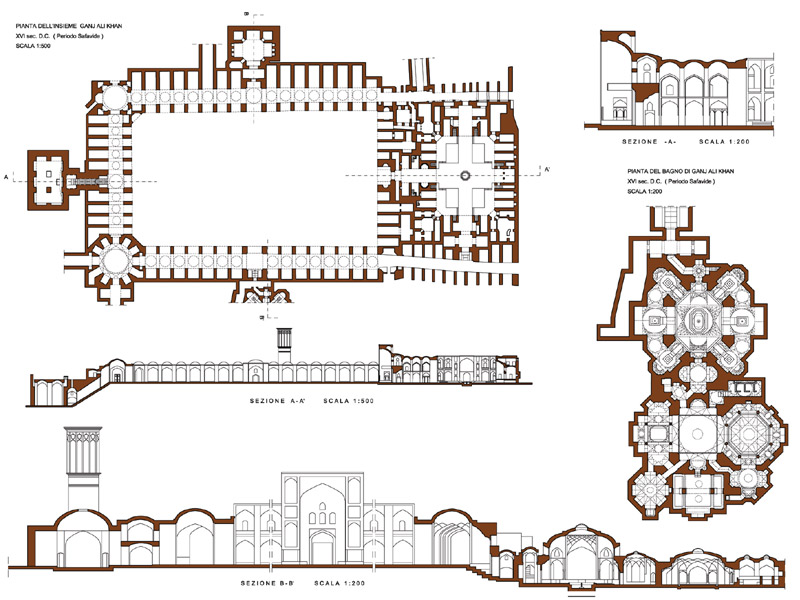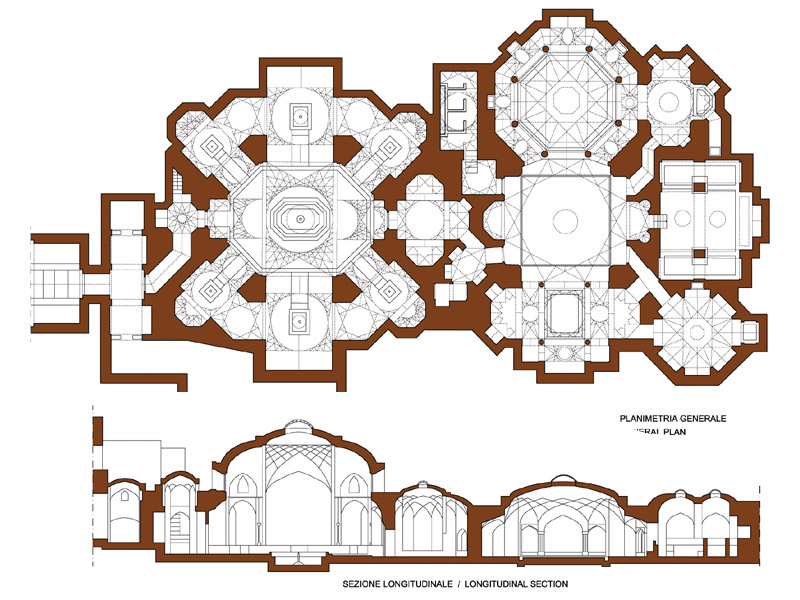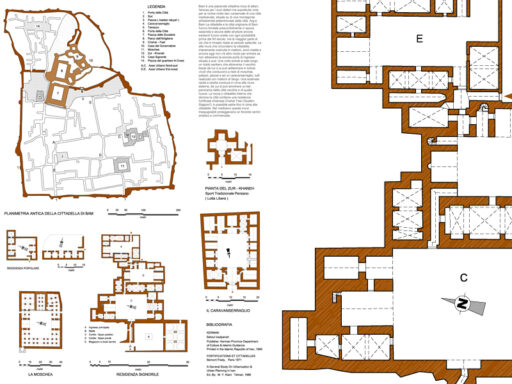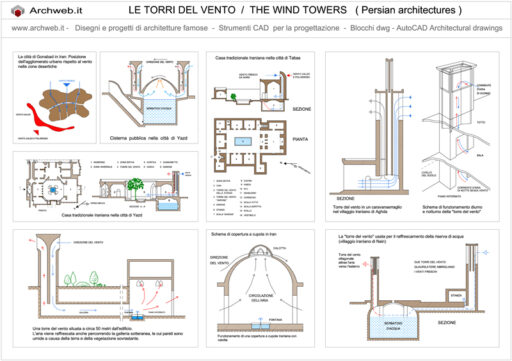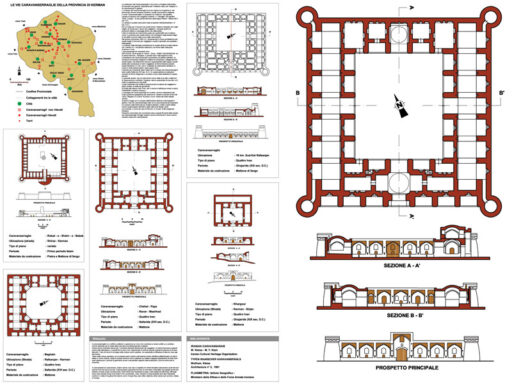Ganjali Khan Complex
Mohammad Soltani Yadzi architect, Kerman, Iran, 1596 – 1631
Location
Kerman in Iran
Year
1596 - 1631
One of the peculiarities of the desert countries are a series of buildings and public areas called TOGETHER, or in Persian MAJMUEH for example the ABNIEH AMADEDIN SET in KASHAN, the MIRCHAGHMAGH SET in YAZD, the VAKIL SET in SHIRAZ and the Complex by GANJ ALI KHAN in KERMAN.
The purpose of these constructions apparently was to have a more comfortable and safe life, and with all the necessary services (toilets), there was also an economic reason why there was an effective saving on construction costs, the result was greater convenience at a lower cost. Certainly this type of construction can only be successful when the country was at peace and with a certain stability of government. Most of these SETS in Kerman and in particular those in its surroundings such as in the cities of Sirjan, Bam, Ravar have the CARAVANSERRAGLI, another construction linked to the Caravanserai is the AB AMBAR (water tank) these AB AMBAR as the AB AMBAR of KHAJEH in YAZD, and the AB AMBAR of GANJ ALI KHAN in KERMAN meet the needs of supplying water to the city for a period of two to six months. The Caravanserai were real places of commerce, where the most widespread trade and transactions of the time took place, they were therefore also favored by governments that imposed their taxes.
MOSQUE and MADRESE were also part of the construction program of the ASSEMBLY; in MADRESE the main elements that the governor believed for internal politics were taught, instead in the mosque people came three times a day to pray and hear religious phrases, also used as a forum for the administration of justice and cultural meetings, a system of minor neighborhood mosques also multiplied the water distribution network destined for periodic ritual ablutions, that is, for the personal hygiene of citizens.
The BAZAR is connected in every way with the CARAVANSERRAGLI in fact the BAZAR rarely organized in open spaces, more often formed by a dense network of passages generally covered in the center of the city, some of which have monumental vaulted rooms, also equipped with deposits and spaces for animals and real hotels that reproduce the structure and use of CARAVANSERRAGLI in the city. Other recurrent building typologies widespread in all Islamic cities are the Baths (HAMMAM) and the public fountains (ceshme).
The Ganjali Khan Complex
(in Persian language مجموعه گنجعلیخان – Majmou-e-yeh Ganjali Khan) is a complex of buildings from the Safavid era, located in the historic center of Kerman in Iran. The complex consists of a madrasa, a square, a caravanserai, a hammam, an ab anbar (water tank), a mint, a mosque and a bazaar.
It was built by Ganj Ali Khan who ruled the provinces of Kerman, Sistan and Kandahar from 1596 to 1621 under the Safavid Shah Abbas I. A series of inscriptions placed within the complex indicate the exact date when these buildings were constructed.
The architect of the complex was Mohammad Soltani from Yazd.
The complex covers an area of 11000 square meters and is centered on a large public square – ninety-nine by fifty-four meters – which is aligned with the Vakil Bazaar running in an east-west direction to the south. The square is enveloped by bazaar arches to the north, south and west and is flanked by the Ganjali caravanserai to the east. The entrance to the Ganjali hammam is located along a section of Vakil Bazar, south of the square, which is known as Ganjali Khan Bazar. The complex was built in Isfahan style.
Drawings that can be purchased

34 €

24 €
altri disegni dwg correlati
How the download works?
To download files from Archweb.com there are 4 types of downloads, identified by 4 different colors. Discover the subscriptions
Free
for all
Free
for Archweb users
Subscription
for Premium users
Single purchase
pay 1 and download 1

































































